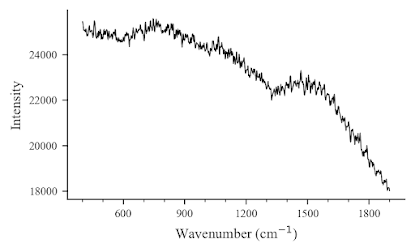Featured
- Get link
- X
- Other Apps
Raman Intensity Calibration from 500 to 1100 nm laser excitation
For repetitive and reproducible results is required a suitable calibration considering the y-axis or intensity axis. The standard calibration method is using a standard calibration lamp and experimental measurement of lamp spectrum, which holds the same wavenumber range as the samples.
The first plot corresponds to the reference spectrum along the wavelength axis from 500 to 1100 nm.
The second step is measuring the spectrum of Halogen Lamp as the next plot shows.
An example of a sample before intensity calibration is shown in the next figure.
The calibrated spectrum of the same sample is shown in the next figure. The calibration shows that the high wavenumber holds less positive compensation than the lower wavenumbers. The final result holds a flatter baseline and with stronger intensity amplitudes.
Acknowledgments.
- Get link
- X
- Other Apps




Comments
Post a Comment